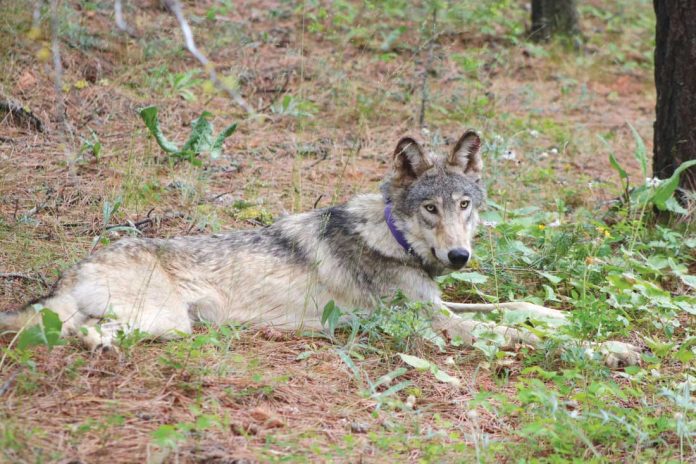
A gray wolf has made his way into San Benito County, and wildlife officials are saying this is the farthest south a wolf has traveled in the state in more than 100 years.
OR-93, a nearly two-year-old male wolf from Oregon, was fitted with a radio collar in June 2020 near where he was born, south of Mt. Hood in Oregon. He left his pack and headed south, arriving in Modoc County, Calif. in late January. He has continued traveling swiftly, moving through Lassen, Plumas, Sierra, Nevada, Placer, El Dorado, Amador, Calaveras, Mono, Tuolomne, Mariposa, Merced, Madera and Fresno counties.
On March 27, California Department of Fish and Wildlife announced that OR-93 crossed Interstate 5 and is in San Benito County, as of the last collar reading.
“OR-93 is blowing out all the records for the farthest south a wolf has traveled into California in modern times,” said Amaroq Weiss, senior West Coast wolf advocate with the Center for Biological Diversity. “This is truly historic for California, but also demonstrates that wolves naturally travel long distances. If protections are in place to allow them to do so, there’s real hope for their future here.”
OR-93’s birth pack, the White River pack, is one of only three wolf families established so far in western Oregon. Most of Oregon’s wolf packs occupy the eastern portion of the state. OR-93 is the first wolf from the White River pack confirmed to have traveled into California.
“We think OR-93 is in search of a mate, but even if he doesn’t find one this year, we sure hope he sticks around,” Weiss said. “He adds genetic diversity to our tiny wolf population and a very Californian flair for outdoor adventure.”
It is unknown whether OR-93 is still in San Benito County or has moved on.
On the morning of March 30, the San Benito County Sheriff’s Office posted a comment on social media about the wolf, whose collar last pinged to the “easternmost part” of the county.
“If you come across this visitor, be kind to him,” says the sheriff’s office post on Facebook. “Call our office or the California Department of Fish and Wildlife if you see him. He has traveled from Oregon and is being tracked by professionals.”
According to the Center for Biological Diversity, fewer than a dozen known wolves now live in California, after being wiped out by hunters in the early 1900s.
Gray wolves are listed as endangered pursuant to California’s Endangered Species Act. It is unlawful to harass, harm, pursue, hunt, shoot, wound, kill, trap or capture gray wolves.
Gray wolves pose very little safety risk to humans, according to the CDFW. CDFW is working to monitor and conserve California’s small wolf population and is collaborating with livestock producers to minimize wolf-livestock conflicts, the department stated in a press release.
Anyone who believes they have seen a wolf in California can report it to CDFW at wildlife.ca.gov/Conservation/Mammals/Gray-Wolf/Sighting-Report.
Wolves can also be reported by phone to CDFW at (530) 225-2300. The sheriff’s office phone number is (831) 636-4080.














